Like any time in history when fuel prices hit or get close to an all-time-high, people start to consider a more fuel-efficient option for their next new car.
These days hybrids are the go-to, but everyone knows Toyota has been ahead of the game on that particular technology for some time, and as a result, there’s a long wait to get into one.
For this comparison, we’re looking at two of the most promising hybrid alternatives in the small SUV space, if you don’t want to wait a year to get into a Corolla Cross.
On the one hand, we have the Haval Jolion Hybrid from China, and on the other, we’ve got the new-generation Hyundai Kona Hybrid from Korea.
They’re more evenly matched than you might expect, but which car will save you the most coin at the pump, and which is the better small SUV? Read on to find out.
Price and features – Do they represent good value for the price? What features do they come with?
Before we launch into the prices, I want to confirm that our two options here are ‘real’ plug-less hybrids.
This electrified space is becoming more confusing with various types of hybrid entering the fray, but our two are genuinely hybrid-drive SUVs, as in, they can actually drive the wheels via electric motors and the engine.
This is opposed to mild hybrids (MHEVs) which simply have additional hybrid assistance for the engine, which can help trim fuel consumption slightly, or plug-in hybrids (PHEVs) which come with the additional inconvenience of plugging in to extract the full fuel-saving benefits.
While our Haval Jolion and Hyundai Kona work slightly differently, the end result is a hybrid system very similar to the ‘Hybrid Synergy Drive’ which has made Toyota such a default choice in households around the country.
Okay, let’s talk price. The Haval Jolion is in top-spec Ultra Hybrid guise which wears a drive-away price-tag of $40,990, while its Hyundai Kona rival here is a base model, wearing a before on-road costs price-tag of $36,000.
While this initially makes the Hyundai look cheaper, once you add those missing on-road costs, at least in NSW where we are testing the car, the actual price for the Kona comes to $39,906, making the gap between them just over $1000 by the time you’re driving away from the dealer.
When it comes to standard equipment, the Haval Jolion aims to impress with its long list of inclusions, but both cars are otherwise quite evenly matched.
For example, both get 18-inch alloy wheels, LED headlights, 12.3-inch multimedia touchscreens, dual-zone climate, a wireless phone charger, as well as keyless entry and push-start ignition.
Only the Jolion gets synthetic leather interior trim with six-way power adjust for the driver's seat, as well as heated front seats, a panoramic opening sunroof, and a holographic head-up display.
Comparatively, the Kona is a bit more spartan, offering fabric seat trim with manually-adjustable front seats, and missing out on seat heating or a sunroof.
However, it still gets a few items over the Jolion with its clever 12.3-inch digital instrument cluster, wireless Apple CarPlay connectivity and USB-C ports throughout the cabin.
It also picks up a much nicer software suite to replace the functional but simple one in the outgoing car.
Our winner for spec has to be the Jolion. Its pricing is up-front and it will wow a lot more people on the showroom floor with its obvious additional luxuries, although considering the Kona is a base model, it certainly holds its own. Check our spec table below for key inclusions on each vehicle.
Price and features:
Haval Jolion Ultra | Hyundai Kona HEV | |
Price (MSRP) | $40,990 | $36,000 |
Wheel size | 18-inch | 18-inch |
Multimedia screen | 12.3-inch | 12.3-inch |
Digital instruments | 7.0-inch | 12.3-inch |
Head-up display | Yes | No |
Apple CarPlay/Android Auto | Yes, wired | Yes, wireless |
Sat-nav | No | No |
Wireless charging | Yes | Yes |
LED headlights | Yes | Yes |
Keyless entry/push-start | Yes | Yes |
Climate control | Dual-zone | Dual-zone |
Seat trim | Synthetic leather | Cloth |
Power adjust | Yes (six-way driver) | No |
Heated seats | Yes (front) | No |
USB ports | 2 x USB A front, 1x USB-A for dash cam, 2x USB-A rear | 2 x USB-C front, 2x USB-C rear |
Sunroof | Yes | No |
Score:
Haval Jolion Ultra | Hyundai Kona | |
Score | 9 | 8 |
Design – Is there anything interesting about their designs?
I think both cars are quite fetching, but in completely different ways. The Jolion again looks to wow prospective buyers with its shiny chrome face and impressive LED light fittings specific to the hybrid grade. It also has a more imposing stance on the road thanks to its larger dimensions.
Elsewhere, I think it has a contemporary SUV silhouette, and a shapely tailgate, but I don’t like how much badgework there is on the rear. It makes an otherwise nice design look clumsy and busy.
The Kona goes in a completely different direction, leaning into Hyundai’s current futuristic style. It certainly catches your eye with its wild angular bodywork and its robotic face, as well as its stunning light-bar fittings front and rear.
Clever use of plastic claddings and unusually-shaped light fittings keep it on current SUV trends. It also has a more contemporary and minimalist badge approach on the rear, with just ‘KONA’ emblazoned below the Hyundai badge.
While I quite like the Kona, I think it runs the risk of alienating prospective buyers who want something a little more conservative when it comes to SUV design.
The interior may well be the make or break point, however, as our competitors here again take a markedly different approach.
The Jolion’s interior looks great at a distance with its big screens and soft-touch synthetic leather finishes, but up close the facade breaks down a bit.
You’re confronted with a bit of a plasticky smell in the cabin, likely due to the over-use of those synthetic leather materials which are not particularly convincing to the touch, either.
The overall dash design in the Jolion is quite fetching, though, with just the right amount of chrome and patterned grey insert panels to break up the black plastic finishes.
I think it’s all on the right side of tacky, and while the synthetic leather trim isn’t convincing, it goes a long way to lifting the cabin ambiance and making the Jolion’s interior a comfortable place to be.
What I don’t like so much is the continued over-use of the Haval logo on the seats and the lacklustre software for the multimedia screen and digital dash which is clunky and inconsistently labelled. At least it provided a reliable connection for Apple CarPlay.
Still, on the whole, the Jolion has a nice, comfortable cabin, with a reasonably attractive design you wouldn’t have expected from Chinese cars just a few years ago.
Meanwhile, the Hyundai Kona continues its crazy science-fiction approach with a wacky and unusual cabin layout.
I love it’s sleek panel design which integrates the digital dash and multimedia offering, and I love the clever use of textured plastics, fabrics, and other interesting materials to make its cabin stand out.
This is especially true for a base offering. For example, instead of the usual full-screen 12.3-inch digital instrument cluster, this base Kona gets a set of dot-matrix style dials with a small supervision screen for your customisable displays.
It’s cheaper than putting a full panel in, but it looks great and suits the car’s personality.
Elsewhere, I like the tech-y console design with plenty of shortcut buttons finished in a brushed aluminium look.
Overall, it’s big and open, and makes the Kona feel like it’s a miniature version of the Ioniq 5 EV.
If I had to pick a winner here, I’d hand it to the Kona for trying something different, but the Haval, while a little clumsier in some areas, feels plush and well finished.
Design Score:
Haval Jolion Ultra | Hyundai Kona | |
Score | 7 | 8 |
Practicality – How practical is their space and tech inside?
Practicality in the cabin is a good story for both our cars, but the Haval has the benefit of larger overall dimensions.
It’s not just pure size though, the Jolion is cleverly packaged to maximise its utility, but it’s also not without its flaws.
For example, there are large bottle holders and pockets in the doors, two more in the centre console in two different sizes, and a large centre armrest console box.
The best piece of design here is the centre console, which has three slots ideally suited for different purposes. One small one is perfect for magnetic cards, like the kind you might use for a parking garage, a second one is perfect for slotting your phone into, while the third largest one is perfect for wallets or keys.
There is also a huge pass-through area underneath, good for even larger objects like handbags or books.
The dual USB ports are also located there, with a handy pass-through to the top, so the interior is effectively cable-managed. The Jolion also scores a rubberised wireless charging bay.
It’s all very clever, but there are also some downsides. For example, the rotary gear shifter doesn’t lock into the three available positions, it simply rotates on the spot, meaning you have to be careful to have selected the right gear.
And while there are some shortcut buttons for the climate functions, having to control fan speed, temperature, and even the volume control via the touchscreen is grating to use while driving. Another overlooked feature is the lack of telescopic adjust for the steering wheel.
The back seat of the Jolion is one of the best in the small SUV space. Massive length leaves heaps of space for my knees behind my own driving position (I’m 182cm tall), and there’s no shortage of headroom, either.
Even width is excellent, which combines with the flat floor to make even the middle position useful for seating an adult in relative comfort.
Haval has not forgot to adorn the doors with a soft trim for your elbow, and for amenities you score a big bottle holder, two more in the padded drop-down armrest, two elastic pockets, as well as two USB-A outlets, a small storage tray, and adjustable vents on back of the front centre console.
In the Kona, a similar approach has been taken to cabin practicality, with some versatile storage zones.
The pockets in the doors are decently-sized, although not as generous as those in the Jolion, while the centre console has a huge open tray with quick-release cupholders.
It makes for a large space, which can be expanded if you remove the divider under the armrest console. This spot also features a floating tray good for wallets and keys.
Up front, there is a rubberised wireless charging tray for your phone, and USB-C outlets poking out of the dash.
The Kona also gets a full array of shortcut buttons for the climate and multimedia controls, with toggles for temperature, and dials for volume.
Full marks there for ease-of-use. The new software suite on its big multimedia panel is also more aesthetically pleasing and much easier to use than the one in the Jolion. Wireless CarPlay is a nice touch, too.
Downsides for the Kona include the abundance of hard-touch plastics. The cabin might have a cool-looking and open design, but it’s not as comfortable as the Jolion with hard claddings for your elbows in the doors and hard plastics which your knees rest up against.
It’s a shame because this was one of the major criticisms of the outgoing Kona, and the same mistake has been replicated in this new one.
At least the manual adjust seats are quick to shift, and the cloth material isn’t so bad, just not as easy to clean as the synthetic leather trim in the Jolion.
The back seat of the Kona is a decent space. It’s nowhere near as large as the Jolion, and continues with the hard plastic trims, but I think two adults could be seated back there in comfort.
The floor is not quite flat, but the raise is quite low, so the middle position could be used by a full-size human in a pinch.
Elsewhere, you score a small bottle holder in the door, flimsy elastic nets on the backs of the front seats, two more small bottle holders in the drop-down armrest, dual USB-C outlets on the back of the centre console with a tiny storage tray, and dual adjustable air vents.
The boot comes in at 390 litres for the Jolion. It’s a wide storage area with reasonable depth, but not much height, especially with the luggage cover in place.
It could only just fit the full CarsGuide luggage set with the cover removed, although the medium case would obscure the driver’s rear view. The Jolion also misses out on a spare wheel, instead having an inflator kit beneath the floor.
The Kona is comparatively impressive in the boot, with 407 litres on offer. This bests the Jolion significantly, with a deeper, taller space, which much more easily fit the full CarsGuide luggage set, but we still had to remove the luggage cover to make it work.
The floor is also adjustable to two levels. Underneath, the Kona features a space-saver spare wheel, a big benefit for long-distance drivers.
Check our table below for additional practicality figures. Our winner here is the Jolion for its massive and versatile cabin, but if you’re carrying around more stuff the Kona is worth looking at for its larger boot capacity.
Practicality:
Haval Jolion Ultra | Hyundai Kona HEV | |
Boot space | 390-litres | 407-litres |
Rear amenity | Vents, USB | Vents, USB |
Dimensions (L x W x H - mm) | 4472 x 1841 x 1574 | 4350 x 1825 x 1585 |
Towing capacity unbraked/braked (kg) | 1300/750 | 1300/600 |
Turning circle | 11.5m | 10.6m |
Spare | Inflator kit | Space saver |
Score:
Haval Jolion Ultra | Hyundai Kona | |
Score | 8 | 7 |
Under the bonnet – What are the key stats for their motors?
Our two competitors here use a slightly different approach to arrive at the same fuel sipping solution. The Jolion has a 1.5-litre four-cylinder engine paired with a fairly large electric motor to produce an impressive combined power output figure of 139kW/375Nm.
It drives the front wheels via a tricky hybrid transaxle set-up with three ratios. This system works similarly to the electrified axle system used in Mitsubishi’s PHEVs or Toyota’s hybrid drive systems.

At certain speeds it operates electrically, at some speeds it blends the two power sources, while at higher speeds it is effectively combustion-only.
To an end-user, though, it functions like a continuously variable automatic. Nice and smooth, with imperceptible shifts between electric and combustion power.

Meanwhile, the Kona pairs a 1.6-litre four-cylinder engine with a much smaller electric motor, for a more humble combined output of 104kW/265Nm.
Instead of the Jolion’s hybrid-specific transaxle, the Kona sends power to its front wheels via a six-speed dual-clutch automatic transmission, with the electric motor placed between the engine and transmission.
This technology has been refined from previous Hyundai hybrid drivetrains, and it shows for reasons we’ll explore in the driving section of this review.
Engine and transmission:
Haval Jolion Ultra | Hyundai Kona HEV | |
Engine | 1497cc four-cylinder | 1580cc four-cylinder |
Power (combined) | 139kW | 104kW |
Torque (combined) | 375Nm | 265Nm |
Transmission | Hybrid transaxle | Hybrid six-speed dual-clutch |
Weight (Kerb) | 1530kg | 1410kg |
Score:
Haval Jolion Ultra | Hyundai Kona | |
Score | 8 | 8 |
Efficiency – What are their driving ranges? What are their charging times?
So now you know roughly how they work, which one actually saves you more at the bowser? To find out, we tested both cars on a controlled 154km driving loop which incorporated a wide array of driving scenarios including stop-start traffic, suburban streets, winding back roads, 70-80km/h expressways, a long hill climb, and a stretch of 110km/h freeway driving.
The Haval Jolion on the official combined fuel consumption cycle is said to consume 5.0L/100km, while the Hyundai Kona HEV has an even more trim official consumption number of just 3.9L/100km.

Our fuel consumption, measured at the pump, had the Jolion overshoot its claim slightly, consuming a still-impressive 5.2L/100km on our drive loop. Meanwhile, the Hyundai Kona consumed just 3.6L/100km, possibly the most impressive real-world fuel consumption I have ever seen on-test, rivalling that of even the most impressive Toyotas.
Our winner by a clear margin is the Hyundai, with the claimed benefits of that dual-clutch automatic coming into play.

As a bonus, both cars are capable of consuming entry-level 91RON unleaded fuel. The only other item to take into consideration is the size of the fuel tank.
The Jolion has a massive 55-litre tank, allowing a theoretical 1100km driving range, while the Kona’s fuel tank is a much smaller 38L, meaning slightly less range (974km) despite its stellar fuel efficiency.
Fuel consumption:
Haval Jolion Ultra | Hyundai Kona HEV | |
Official/combined | 5.0L/100km | 3.9L/100km |
On-test (100km measured at pump) | 5.2L/100km | 3.6L/100km |
Minimum RON | 91 | 91 |
CO2 emissions | 115g/km | 89g/km |
Fuel tank size | 55L | 38L |
Theoretical range between fills | 1100km | 974km |
Score:
Haval Jolion Ultra | Hyundai Kona | |
Score | 8 | 9 |
Driving – What are they like to drive?
Both cars are very impressive to drive. The Haval primarily because of where Chinese cars have come from and how much it has closed the gap to more established rivals, and the Kona because of how much Hyundai has improved on an already good small SUV.
Let’s talk about the Haval first. It feels much more substantial than the Kona on the road owing to its larger dimensions, but also its taller seating position.
Visibility is great out the front and it’s got nice wide wing mirrors, but the rear window is a little small and easily blocked if you have passengers or luggage.
It makes up for this somewhat by having one of the best 360-degree parking cameras in the segment, where the base Kona only gets a reversing camera.
I really like the Haval’s hybrid drive system. It’s super slick and effortless, with the additional power from its large electric motor a real benefit when taking off from a stop.
Again, to an end-user this system behaves like a CVT which is a good thing because you can just put your foot down and the car sorts the rest out with a nice smooth transition between power sources which you don’t notice.
However, it doesn’t feel as powerful as the advertised figures suggest. While the electric motor provides a solid off-the-line response, it feels a bit breathless at higher speeds when a lot is being asked of the anaemic engine.
It’s great for most scenarios, but overtaking at expressway or freeway speeds might be its weakest attribute.
Elsewhere the steering is quite direct, if a little doughy, and the pedals feel a bit distant. It’s just missing that finely-tuned feedback in a few areas which more established automakers are much better at, it’s particularly noticeable in this test against the excellent Kona.
The ride is a similar story. I think the hybrid has the best ride in the Jolion range, although it’s on the firmer side and has a hollow feel over frequent corrugations and more abrupt bumps.
On the whole, though, it’s impressive considering where Chinese cars have come from in recent memory, and its cornering ability is much better than that of the MG ZS, for example.
The Hyundai Kona is a formidable opponent. Somehow improved across the board from its predecessor, the introduction of this upgraded hybrid drivetrain improves an already robust driving experience.
The Kona immediately feels more hatch-like than its rival here, with a cosy and comparatively low and sporty seating position while maintaining a glasshouse approach to its windows and rear vision.
I immediately missed the Jolion’s camera suite when it came to parking, but it was easier to see with your own eyes where the Kona was placing itself, particularly out of the rear.
I was expecting much less of the Kona’s hybrid dual-clutch set-up. It has much less power on paper, and the previous-generation version of this technology had a noticeable switch between the electric and combustion driving features, as well as the occasional lurch.
Not anymore. The new version in this Kona is very impressive, with all those small foibles having been ironed out nicely. The electric driving is now as smooth as it is in the Jolion, while the switch between powertrains is nearly as subtle.
Actually, the Kona benefits from having more fixed ratios. While it feels weaker than the Jolion from take-off, it makes up for it at a variety of higher speeds by being able to lock up its gears and accelerate faster when you’re already rolling.
It feels just as powerful as the Jolion despite its more humble power outputs and much weaker electric assistance.
The Kona is also far more finely tuned when it comes to steering response, pedal feel, and especially its excellent ride quality.
It has the benefit of a multi-link rear suspension set-up compared to the Jolion’s torsion beam, making it an absolute joy to throw into the corners, with superior comfort and cabin refinement when things get bumpy.
If you’re a keen driver, then, it’s no contest here. The Kona is far superior. It’s a much more resolved product with minute attention to detail applied to every aspect of the driving experience.
The Jolion, while impressive, doesn’t have the same resolved feel, although there’s something to be said for the level of comfort on offer thanks to its plush seats and more padded cabin.
Driving Score:
Haval Jolion Ultra | Hyundai Kona | |
Score | 7 | 8 |
Warranty & Safety Rating
Safety – What safety equipment is fitted? What are their safety ratings?
Both cars get a substantial suite of active safety equipment with all the major boxes ticked, but both also have significant annoyances which tarnish the experience.
Included are freeway-speed auto emergency braking, both get lane keep assist with lane departure warning, and both get blind spot monitoring with rear cross traffic alert.
Only the Kona gets adaptive high beams, but the Jolion gets an excellent 360-degree camera suite with parking sensors front and rear.
Both cars also get seven airbags, but only the Haval Jolion wears a maximum five-star ANCAP safety rating as of when we published this comparison test, the Kona was so new it was yet to be rated.
Annoyingly, both cars have frustrating and invasive safety features. The Jolion has an overactive lane keep assist function, which occasionally grabs the steering wheel out of your hand when it decides you’ve strayed even away from the centre of the lane.
This feature is on every time you start the car, and requires clicking into a safety sub-menu to turn it off. It also has a frustrating active cruise control feature, which significantly slows the car down for corners, which makes this feature all but unusable.
Meanwhile the Kona has its own share of frustrating items, although they are slightly less invasive. This primarily includes the traffic sign recognition and driver attention alert features.
Both are on every time you start the car, and both constantly harass you with beeps and bongs. The traffic sign recognition pulls 40km/h speed limits from the back of buses and from inactive school zones, constantly harassing you for going the actual speed limit, while the driver attention alert is easily confused by hats or sunglasses, again sounding a beep if it thinks you aren’t looking at the road.
Do we have a winner? I’d hand it to the Kona by a tiny margin for being slightly less physically invasive whilst still ticking the key safety boxes. But both cars should do better.
Safety features:
Haval Jolion Ultra | Hyundai Kona HEV | |
Auto emergency braking | Y (cyclist, pedestrian, cross) | Y (cyclist, pedestrian, junction) |
Lane keep assist/departure warning | Y | Y |
Blind spot monitoring/rear-cross traffic | Y | Y |
Adaptive cruise control | Y | Y |
Driver attention alert | Y | Y |
Traffic sign recognition | Y | Y |
Tyre pressure monitoring | Y | Y |
Adaptive high-beam | N | Y |
Parking cameras | 360-degree | Reverse |
Parking sensors | Front + rear | N |
Number of airbags | 7 | 7 |
ANCAP safety rating | Five-stars (2022) | Not yet rated |
Score:
Haval Jolion Ultra | Hyundai Kona | |
Score | 7 | 8 |
Ownership – What warranty is offered? What are their service intervals? What are their running costs?
It’s an easy win for the Chinese challenger here, which offers a lengthy seven-year and unlimited kilometre warranty compared to the Hyundai’s stock-standard five-year, unlimited kilometre promise.
The Jolion also offers a full five years of roadside assist up front, while the Kona only provides 12 months at a time provided you perform genuine servicing with Hyundai.
Both cars are also covered by a five-year capped price servicing program. Pricing is impressive for both cars, but the Jolion is a bit cheaper than the Kona on an annual basis.
Ownership:
Haval Jolion Ultra | Hyundai Kona HEV | |
Warranty length | Seven-years/unlimited km | Five-years/unlimited km |
Roadside assist | Five-years | 12 months with each service |
Capped price servicing | Five-years | Five-years |
Average annual cost (5yr) | $330 | $399 |
Score:
Haval Jolion Ultra | Hyundai Kona | |
Score | 9 | 7 |
Verdict
This has been a tough test. Both cars have outperformed expectations in our testing. We like to have a clear winner on these comparison tests, but awkwardly this one has turned out to be a draw based on our eight category scoring system.
The truth is, these two cars are simply good at different things despite being in the same market segment with similar intentions. The Kona is my personal pick of the two. It’s a much better driver’s car thanks to its finely-tuned dynamics and less annoying safety features. It’s also incredibly impressive when it comes to fuel efficiency, saving you more at the pump.
Family buyers particularly those on a budget shouldn’t look past the Jolion, though. The Chinese challenger offers extremely impressive value, a more lavishly appointed and spacious cabin, as well as some features I wish the Kona had at this price.
Score:
Haval Jolion Ultra | Hyundai Kona | |
Score | 7.8 | 7.8 |





































































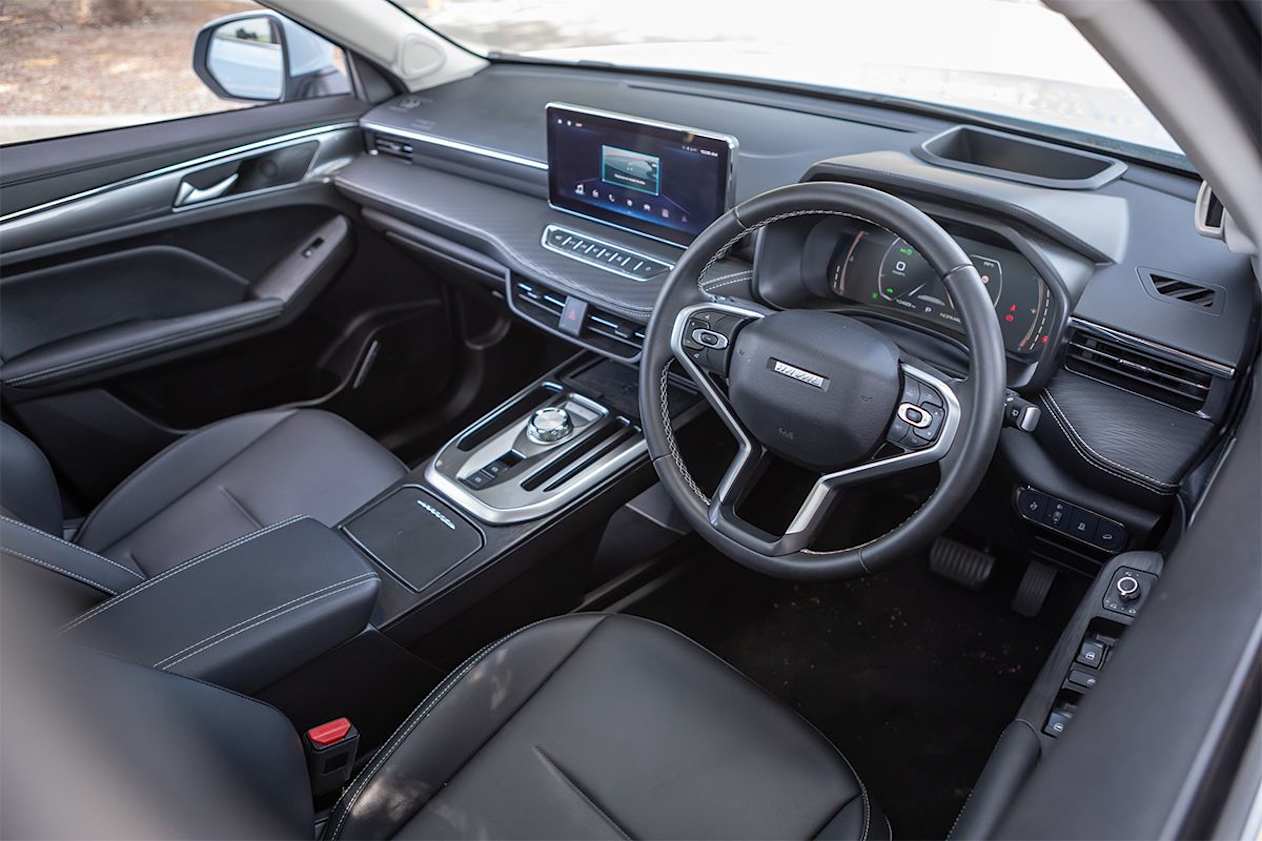



























.jpg)
.jpg)
.jpg)




















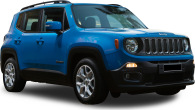
















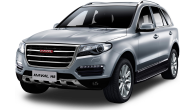



 copy.png)

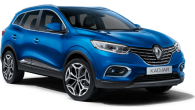
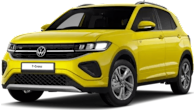










.jpg)
.jpg)



.jpg)
.jpg)